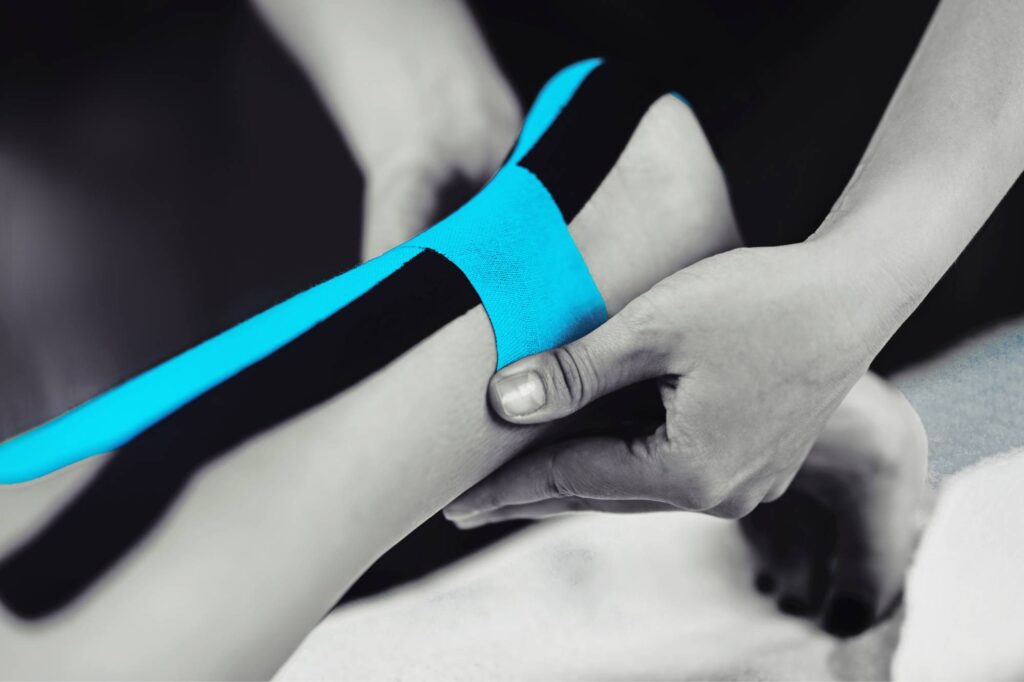
Overview
Kinesio Taping is a therapeutic technique in which therapeutic, specially designed tape is strategically applied to the body to provide support and improve function. Kinesiology tape is designed to mimic the elastic properties of the skin so that it does not impede normal movement, unlike other types of medical/athletic tape. This technique is often used to reduce pain and swelling following injury or surgery, provide extra support to specific muscles and joints, or both.
A physical therapist or other therapists may apply the tape for the patient for the first time, then guide on self-taping for the future. The location, pattern, and tension of Kinesio Taping depend on the situation and the patient’s goals. In general, kinesiology tape is stretched during application, pulling back while attached to the skin, thus microscopically lifting the skin and changing pressure and space in the underlying tissues.
Benefits
Kinesio Taping is used to microscopically lift the skin from the underlying tissue, decreasing pressure, and increasing space, and has many benefits:
- Promote drainage of lymphatic fluid to decrease swelling
- Improve blood flow to assist healing and/or performance
- Provide support for weaker or strained muscles and joints
- Prevent injury
- Reduce musculoskeletal pain
- Relieve tension in trigger points
Contraindications
Kinesio Taping is contraindicated when patients are allergic to the tape or adhesive, have fragile skin, or have a history of deep vein thrombosis. In addition, increased circulation can be harmful near an open wound, a cancerous growth, or a fracture.
